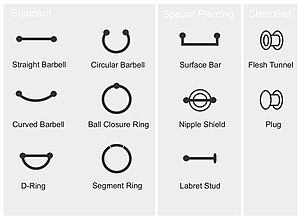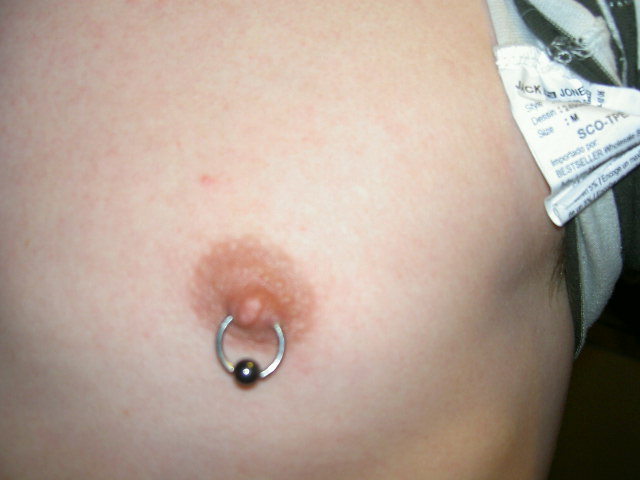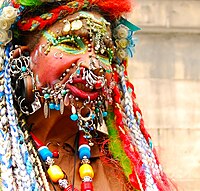Online sales are temporarily suspended !!
Contact the seller in advance before paying for the order!
Body Jewelry – Place Your Jewelry Right Where You Want It.
Body Jewelry is becoming very popular and can today be seen as a jewelry trend. It has gone from being quite taboo to something now commonly accepted. My experience with piercing is restricted to pierced earlobes. My father was a dentist, and therefor very skeptical to me having it done, because the danger of infection and hepatitis.
I begged and cried, and eventually he gave in. On one condition – I had to do it at his office, under sterile conditions. So I had my ears pierced with syringes and root filling tools. It was very hygienic and painless, and since pierced ears was not as common as it is today, it made me feel very special.
Most people do of course not get their body jewelry at the dental office, but in a tattoo salon. And there are lots of places to put a piercing on your body. But before we get into them, lets see what kind of jewelry there are.
The body Jewelry:
There are many types of jewelry you can use, but they can mainly be sorted into 7 categories.
Barbells or ball closure bars:
A barbell is a bar with a round ball on each end. The balls are screwed on and can be swapped for more personal and ornate balls. You can get balls as accessories in every color, shape and material you like. A barbell is used by sliding the bar through the pierced hole and then screw on the balls to keep it in place.
Bananabells or curved barbells:
A bananabell works just like a barbell, but the bar is curved instead of straight. They often have one small ball and one larger, depending on where they are used on the body.
Body spiralis:
These are an alternative to bananabells. They are shaped like a swirl or spirali shape with a ball on each end. They can also have different other shapes with a changeable ball in the middle.
Circular barbells:
This is a half circle with a ball in each end. Fits almost any piercing.
Labret studs:
A labret stud can be used for any type of piercing. It have a flat back plate that sit flush with the skin, a bar that goes through the hole and a changeable ball in the other end.
Body jewelry for stretching:
These are made for stretching a piercing. They come in many shapes from cones to swirls, rings and discs. Some are thin on one end and thicker on the other, and is used to slowly stretching the hole, by moving the piece gradually from thin to thick, letting it heal properly between each stretch. Stretching can be done in places where the tissue is soft, like earlobes, lip, septum and nipples.
Micro dermal anchors:
These differ from the other types of body jewelry. Only one part is visible. The other, the anchor, often a plate where the visible part is screwed on, is placed under the skin.

All the balls in body jewelry are changeable, and there are lots of accessories and variations, so you can personify your body jewelry in any way you like. You can have thin bars or thicker bars, depending on how large holes you want/have. The thickness of the body jewelry bars are measured in Gauges, going from the thickest to the thinnest:
- 10 mm = 00 gauge
- 8 mm = 0 gauge
- 6 mm = 2 gauge
- 5 mm = 4 gauge
- 4 mm = 6 gauge
- 3,2 mm = 8 gauge
- 2,4 mm = 10 gauge
So now you know what you kind of jewelry you can wear, but where on the body can you wear it?
Placements on your body:
Technically you can have a piercing anywhere on your body where you can make a hole. There are however some places that are more commonly used than others, and again others that are very private. Some piercings actually have their own name as well, named after who first introduced them, or by where it is placed on the body. Let's start with the least extreme ones.

Pierced ears are overall accepted as an enhancement and has been for thousands of years. It has been worn by both women and men, in one ear or both. In the 1990s several piercings in the ears became modern in the western world, not only in the ear lobe, but along the whole length and width of the ear.
Lobe piercig: this is the ear piercing that we are most used to, it can be done traditionally front to back, but can also be done in some other ways, like 14-transverse lobe piercing which goes from side to side of the lobe. Any body jewelry can be used. Normally a lobe piercing takes from 6-10 weeks to heal. You can use any kind of body jewelry in the lobes.
Ear cartilage piercing: This can be done through every part of the ear cartilage, each named by their location. Some places are very small and only very small barbells or micro jewelry can be used. Cartilage piercings takes longer time to heal, than an earlobe piercing, but should be healed within 8 - 16 weeks. The cartilage piercings have names like: 1-anti-Tragus, 2-auricle, 3-conch, 4-daith, 7-orbital, 8-pinna, 9-forward pinna, 10-rook, 12-snug, 13-tragus, 15-vertical tragus and 16-ear weaving, due to the ear's anatomy.
11-Scaffold piercing and 5 + 6-industrial piercings: Piercing that goes through two or three cartilage areas and are joined by one long barbell.
Stretched earlobes are coming into fashion again, previously only used in native societies. You can use all kinds of body jewelry to pierce your ears, giving perfect fits anywhere on the ear you might want one. To stretch, you gradually widens the hole, by using larger gauged bars, or special jewelry for stretching. It is very important that the stretched hole heals completely in between the stretching s.
 Nose:
Nose:
Nose piercing has a long tradition around the globe, and has gradually been accepted as a fashionable type of body jewelry in the western world.
There are several places on the nose where you can put a piercing. The most common is in the nostril, through the septum or on the nose bridge, also called Earl piercing, after the first man who got it.
Noses take up to three months or even longer to heal. You should not use sterling silver in a newly pierced nose, as the tarnishing will make a permanent tattoo around the hole. Also avoid porous materials like plastic until it is properly healed.

For nostrils you can use a nose screw, which is a short post which goes into a curl. The curl holds the jewelry in place. You can also wear studs and circular barbells. Through the septum you can use barbells, circular barbells or specially designed septum jewelry like pointed bars, bone, curved wires etc.
The most common use on the nose bridge, is a barbell.
Eyebrow:
Eyebrows can be pierced along the whole brow. You can use bananabells or curved barbells, ball closure rings, circular barbells. Eyebrow piercing may be due to migration, which is when the skin rejects the object, wearing thinner and thinner until it no longer can hold the jewelry. It is also easily irritated during the night, as we move a lot in our sleep. It has a healing time of 6 – 8 weeks, but should not be removed during the first 6 months, as it may close quickly. So during that time, you may have some trouble sleeping in a comfortable position.

Lip piercing:
Any part of the lip can be pierced, and some places have even got their own names.
- Labret
- Madonna piercing
- Medusa piercing is just above the upper lip, centered in the small groove in the middle.
- Side lip piercing, is on the side of the lower lip.
- Snake bites
- Spider bites are two piercings placed next to each other on the side of the lower lip.
Lip piercing can lead to damaging of gums and teeth because the jewelry rub against them, and since half of the piercing is inside the mouth, also are prone to infections. So, the use of the right body jewelery and hygiene is important. The most used jewelry in lip piercing are circular barbelles or labrets. Labrets sits comfortable against your gums, or a ball closure ring if pierced on the lip, like with a snake bite.
 Tongue piercing:
Tongue piercing:
This leans a bit on the less common piercings, but is more accepted today than 10 years ago. Now, all piercings are a bit of risk, but tongue piercing is one of the more health hazardous ones. The tongue is a very blood filled organ, and sits in the mouth which is full of moisture and bacterias. The risk of infection and bleeding are huge and can, if severe, be life threatening. The danger of an allergic reaction may be fatal, and also the transfer of diseases like Hepatitis, HIV, tetanus, Syphilis and tuberculosis, if done without the necessary sterile instruments or after care.
The tongue is also the organ with which we speak. Speech impediment may occur, or even damaged nerves. Dentists are concerned for the increasing interest for tongue piercing, as they see that body jewelry worn inside the mouth chip or damage teeth and give rubbing wounds to the gums. Barbells are a concern issue as well, as the beads may unscrew by accident, and they and/or the bar may be swallowed or inhaled, causing lung problems or damage to internal organs. So, think twice before you get your tongue or inside of your mount pierced.
- Tongue piercing is mostly done through the tongue from the underside to the upper side.
- Tongue venom piercing are two piercing placed on each side of the tongue.
- Tongue web piercing is done through the thin strip of flesh where the tongue is attached to the lover jaw.
The most common jewelry used for this kind of piercing are labrets, barbells or circular barbells.
Oral piercing:
Believe it or not, but putting body jewelry inside the mouth is popular. Like tongue piercing it is not visible unless you open your mouth. They are therefor referred to as private piercings. Oral piercing may damage your gums or teeth due to jewelry rubbing against them. Because of good blood supply inside the mouth, the piercings heel fairly quickly though in 4-10 weeks. In general you can pierce anywhere inside your mouth, but these two are the most common ones.
- Frowny piercing: Put where the lower lip meets the gum. Because of the location a ball closure ring is most suitable.
- Smiley piercing: Located where the upper lip meets the gum. A ball closure ring or circular barbell is suitable for this area.
 Navel piercing:
Navel piercing:
This is one piercing that really have rose to fame and glory. It is not seen as provocative or on the edge, but has become almost as accepted as ear piercing. Girls from around the world adorn their bellies with lovely bananabells jewelry and other belly button jewelry, perfect for this era where showing of bellies is so in.
It is also one of those piercings that take the longest to heal. Because of where it is placed, it is constantly moved by our movements, irritated by sweating, trouser linings and clothes. A pierced navel may take from 4 months up to a whole year to heal properly, and from what I have read, it may be quite painful. But beautiful it is with the right piece of jewelry.
There are two types of belly button piercing.
- Belly button piercing: Goes through the thin flesh just above the belly button, and the lower part of the jewelry hangs inside the navel.
- Inverse navel piercing: Goes through the thin flesh on the lower part of the belly button.
 Nipple piercing:
Nipple piercing:
Nipple piercing is popular by both women and men. It, goes through the base of the nipple usually horizontal. But can also be done vertical.
The body jewelry in the nipple should always be removed when breastfeeding, as it may cause problems for the baby to suck, can damage gum and teeth and may also be dangerous if the barbell comes loose and the baby swallows it or inhale it. If the body jewelry inserted is too small, it may cause infections, abscess and even mastitis, which is an infection of the whole breast.
A pierced nipple may take from 6 to 12 months to heal, something that makes it more due to irritation and infection than other types of piercing. Hygiene is therefor very important.
Genital piercing:
Genital piercing is very private indeed, and whether it can be called a form of body jewelry or not, can be discussed. I believe that these piercings are done mainly for enhancing sexual pleasure, and not for the jewelry itself. I will therefor not write much about them here, other than that there are several types of genital piercing both for women and for men to chose from. Among them the price Albert piercing.
Hygiene and piercing:
If you are thinking about getting some body jewelry, make sure that you read as much about it as you can on forehand. This way you will know more about what kind of piercing you would like and what it involves having it. Take into consideration that we all have different anatomy, and what may look nice on one, may not look equally nice on someone else.
Making holes in the body always increase the risk of infections and the danger of exposure to diseases like hepatitis, HIV, tuberculosis and other serious illnesses. Because of this you should always go to a professional that use sterile instruments, and can give you good advices around the procedure and after care.
Also keep in mind, that it involves scarring, if you remove the jewelry again. So make up your mind about where on your body you can tolerate having scares.
When it comes to stretching, it is not reversal. Once stretched, it will remain stretched forever. Like a tattoo, some piercings are forever.
Return from Body Jewelry – Place Your Jewelry Right Where You Want It. to Jewelry Trends
Go to Home Page
Leave a comment ,
I would love to hear your opinion on this page. Good or bad, it will help me making this Site better.










